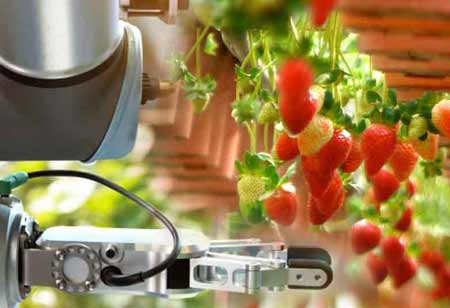Thank you for Subscribing to Agri Business Review Weekly Brief
Applications of Precision Farming Technology
We must find new ways to handle an ever-growing population and deteriorating climatic conditions.

By
Agri Business Review | Monday, October 03, 2022
Stay ahead of the industry with exclusive feature stories on the top companies, expert insights and the latest news delivered straight to your inbox. Subscribe today.
Technological advancements in precision farming can assist farmers in increasing their farm's total production and profitability.
FREMONT, CA: We must find new ways to handle an ever-growing population and deteriorating climatic conditions. Current approaches are insufficient, defined by monocultures and heavy usage of chemicals derived from fossil fuels. Precision agriculture is a data-driven method of agricultural production that aims to maximize productivity while decreasing inputs. It dates back to the early days of computing when the first mainframe computers were employed to oversee massive agricultural operations. It wasn't until the emergence of GPS and other technology in the late 20th century that widespread adoption of precision farming began. Today, farmers worldwide employ precision agriculture to boost yields and reduce inputs that include:
Variable rate fertilization
Variable rate fertilization is a fertilizer application that considers the various soil types and plant densities in a field. The objective is to utilize the optimal amount of fertilizer in each region to maximize crop yield while minimizing nutrient loss. This method of fertilizing plants can carry out GPS mapping technology, which permits farmers to produce comprehensive fertility maps of their fields. Farmers use these maps to schedule fertilizer applications based on the individual requirements of each region. The advantages of variable rate fertilization include increased yields, fewer nutrient losses, and increased input efficiency. Therefore, this
Irrigation scheduling: Irrigation scheduling determines the quantity and timing of crop watering to enhance crop development while conserving water. Several elements are essential while developing an irrigation schedule, including weather conditions, soil type, and crop kind. Farmers can build a personalized irrigation plan that meets the demands of their crops by taking into account all of these various aspects. Promoting plant growth and irrigation scheduling reduces water waste and decreases production expenses. As water becomes scarcer in many regions of the world, efficient irrigation techniques will become increasingly crucial. Farmers who can devise an efficient irrigation schedule will be in a strong position to face future challenges.
Yield mapping: The process of yield mapping is monitoring agricultural yield in connection to specified geographical areas. Farmers then use this data to determine which regions are productive and require development. Various techniques, including GPS-based systems, handheld devices, and drones, can be used to map yield. With this data, farmers may make informed judgments on seed planting, fertilizer application, and watering. Yield mapping can assist farmers in identifying issues such as nutrient deficits and pest infestations at an early stage. By using yield mapping data, farmers may maximize crop yields and increase the efficiency of their operations.





